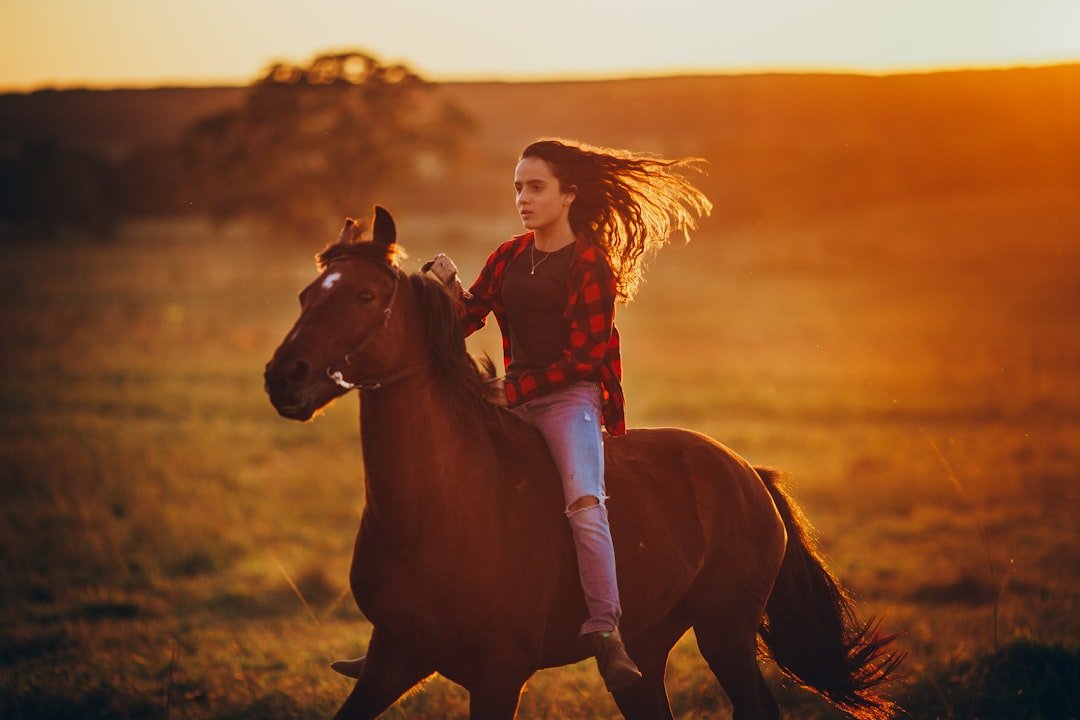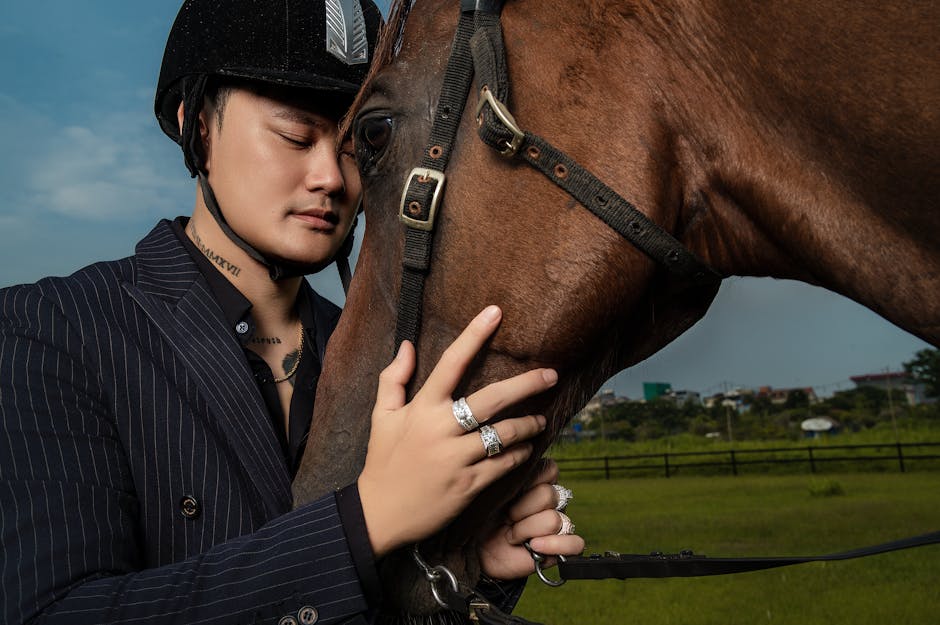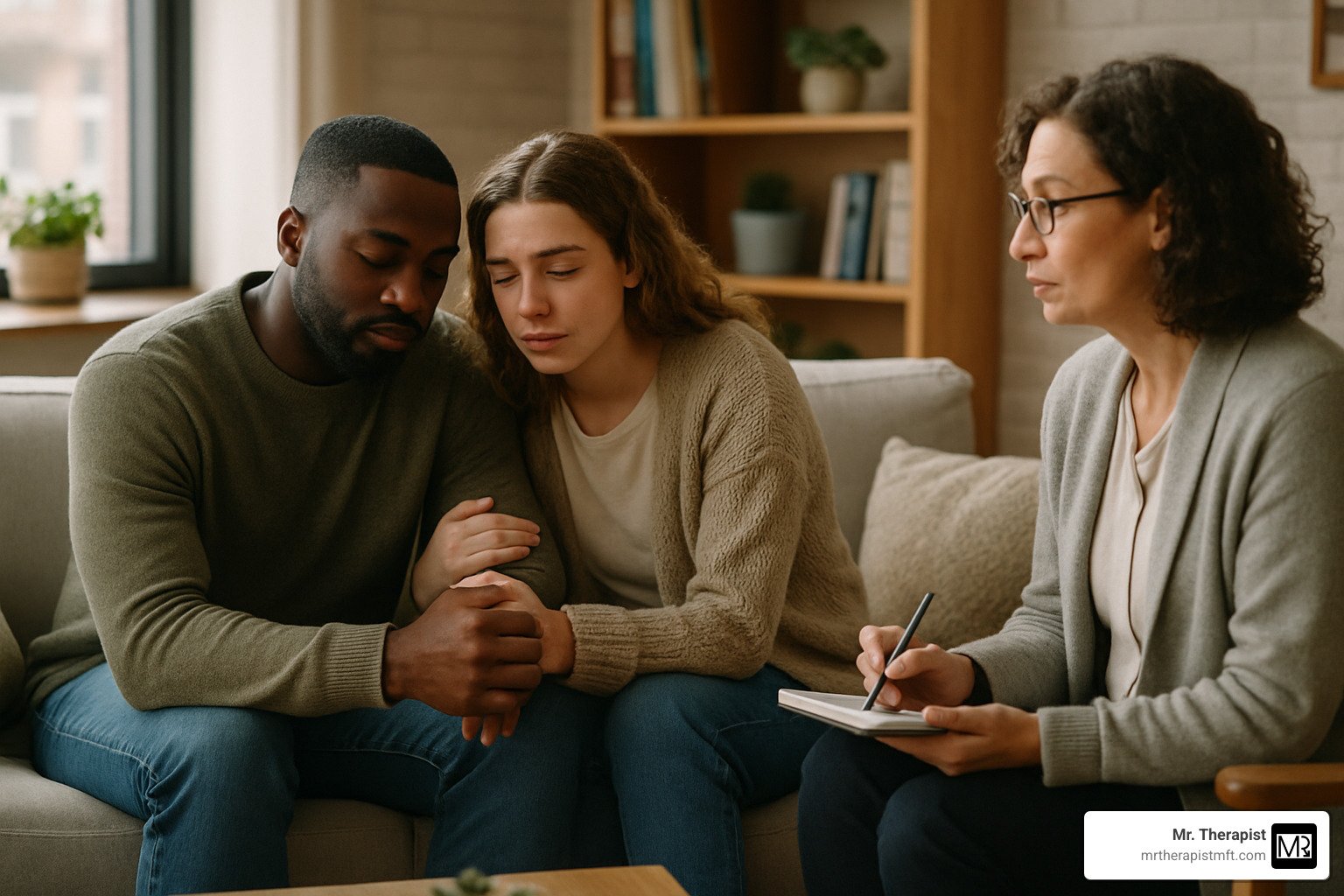
Why Equine Therapy Is Gaining Recognition for Teen Mental Health
Does equine therapy benefit teenagers with anxiety and depression? Yes, research shows equine therapy can significantly reduce anxiety and depression symptoms in teens through improved emotional regulation, increased self-esteem, and improved social skills.
Quick Answer:
– Anxiety reduction: Studies show decreased GAD-7 scores and improved mindfulness skills
– Depression improvement: Increased positive affect and sense of mastery compared to traditional therapy
– Self-esteem boost: 75% reduction in teen suicide risk reported in treatment outcomes
– Social skills: Significant increases in perceived social support after 4-month programs
– Emotional regulation: Horses provide real-time biofeedback for emotion management
As teen mental health challenges reach crisis levels, parents and therapists are exploring innovative approaches beyond traditional talk therapy. Equine-assisted therapy offers a unique blend of experiential learning and emotional healing that speaks to teenagers in ways conventional counseling sometimes cannot.
The magic happens when a 1,000-pound horse mirrors a teen’s emotional state. If a teenager approaches anxiously, the horse may pull back – teaching the teen to practice deep breathing until the horse re-engages. This immediate, non-judgmental feedback creates powerful learning moments that transfer to real-world situations.
Multiple studies support these observations. A 2015 study found that after six weeks of equine therapy, participants reported reduced PTSD symptoms, decreased anxiety and depression, and improved mindfulness skills.
I’m Emmanuel Romero, a Licensed Marriage and Family Therapist who has worked extensively with teens facing emotional challenges. Through my experience at treatment facilities and as a Mental Health Specialist in schools, I’ve seen does equine therapy benefit teenagers with anxiety and depression when integrated thoughtfully into comprehensive treatment plans.

What Is Equine Therapy & How Does It Work for Teen Mental Health?
Imagine your teenager connecting with a 1,000-pound therapist who never judges, never interrupts, and always tells the truth about how they’re feeling. That’s the essence of equine therapy – a hands-on approach that uses horses as partners in healing.
Unlike sitting in an office talking about feelings, equine therapy gets teens moving, thinking, and experiencing emotions in real-time. The magic happens when horses mirror what teenagers are feeling inside. If a teen approaches anxiously, the horse might step back or tense up. When the teen takes a deep breath and calms down, the horse relaxes too.
This immediate feedback creates powerful learning moments. Horses are prey animals, which means they’ve evolved to be incredibly sensitive to emotions and energy around them. They can sense when someone is anxious, angry, or peaceful – and they respond honestly every single time.
The science behind this connection is fascinating. Working with horses triggers the release of oxytocin (the bonding hormone) while reducing cortisol (the stress hormone). This creates the perfect brain state for learning new emotional skills.
Core Modalities Explained
There are three main ways horses help with therapy, each designed for different goals and comfort levels.
Equine-Assisted Psychotherapy (EAP) pairs a licensed therapist with a horse specialist for ground-based activities. No riding required – teens might groom horses, lead them through obstacle courses, or simply observe how the herd interacts.
Equine-Assisted Learning (EAL) emphasizes building life skills and confidence through structured horse interactions.
Therapeutic riding involves getting on the horse as part of therapy. PATH International sets the safety standards for these programs.
The EAGALA model has become the gold standard since 1999. These programs stay on the ground, focusing entirely on the relationship between teen and horse rather than riding skills.
Why Horses, Not Dogs or Dolphins?
First, their size commands respect. A horse weighing around 1,000 pounds naturally encourages teens to communicate clearly and assertively.
Scientific research on horse emotional cue recognition shows that horses can actually tell the difference between human emotions and remember how specific people made them feel.
Unlike dogs that are bred to please humans, horses are more selective about their relationships. They won’t automatically offer affection – it has to be earned through consistent, respectful interaction. This teaches valuable lessons about trust, boundaries, and building authentic relationships.
The outdoor setting adds another layer of healing. Fresh air, natural light, and the peaceful environment of a barn can improve mood before the actual therapy even begins. Does equine therapy benefit teenagers with anxiety and depression? The natural setting alone provides stress relief that’s impossible to replicate in a traditional office.
Does Equine Therapy Benefit Teenagers with Anxiety and Depression?—Research & Outcomes
The research is clear: does equine therapy benefit teenagers with anxiety and depression? Absolutely. While we need more large-scale studies, the evidence we have shows real promise for teens who’ve struggled with traditional approaches.

What makes these findings exciting is how quickly teens respond. A study of adolescents in equine-assisted therapy showed significant increases in confidence, self-esteem, and assertiveness while undesirable behaviors decreased noticeably.
Key Findings: Anxiety Scores
In a 2015 study tracking teens through six weeks of equine therapy sessions, researchers found decreased anxiety and depression symptoms across the board. Participants also showed improved mindfulness skills and better emotional responses to trauma triggers.
The “Reining in Anxiety” program worked with 39 kids aged 6-17 who had mild-to-moderate anxiety. The results showed significant decreases in anxiety scores from start to finish, with 97% consistency across 136 sessions.
A 2018 study found that anxiety improvements lasted beyond the program itself, with reduced symptoms still measurable three months after completion.
Key Findings: Depression Symptoms
A fascinating study compared teens in equine-facilitated therapy with those in regular group therapy. Both approaches helped reduce negative emotions equally well. But equine therapy was significantly better at increasing positive feelings and mood. For depressed teens who’ve forgotten what happiness feels like, this difference is huge.
Teens working with horses showed greater improvements in their “Sense of Mastery” and “Sense of Relatedness” compared to traditional education-based groups. These represent a teen’s belief that they can handle life’s challenges and that they belong in meaningful relationships.
Unique Advantages Over Talk Therapy
The most powerful advantage is immediate biofeedback. When a teen approaches a horse while carrying anxiety or anger, the horse responds instantly – giving teens real-time awareness of their emotional state without judgment.
Many teens struggle to put feelings into words. Equine therapy sidesteps this by focusing on actions and experiences rather than verbal processing.
The engagement factor can’t be ignored. Teens who cross their arms and stare at the floor during traditional therapy often become curious and alert around horses.
Limitations & Evidence Gaps
Most studies involve small groups of teens, and we need more randomized controlled trials. Cost creates a real barrier – equine therapy sessions often run around $225 compared to $160 for traditional therapy sessions. Insurance rarely covers horse-related expenses.
Safety concerns, while minimal with proper protocols, can’t be dismissed. Some teens may have severe horse phobias or allergies that make this approach inappropriate.
Inside a Typical Session: What Teens & Parents Can Expect

A typical session runs 45-60 minutes and always includes two trained professionals: a licensed mental health therapist and a certified equine specialist. This teamwork ensures both emotional safety and physical safety throughout the experience.
Every session starts with a safety briefing that covers basic horse behavior and ground rules. Teens learn how horses communicate through body language – ears forward means curious, ears pinned back means irritated.
The heart of the session involves hands-on activities. Grooming often becomes a favorite activity – the rhythmic brushing motions naturally calm both horse and teen. Many anxious teens find their racing thoughts slow down as they focus on the gentle, repetitive strokes.
Leading a horse through obstacle courses teaches assertiveness immediately. If a teen approaches tentatively or gives unclear signals, the horse simply won’t follow. But when they breathe deeply, stand tall, and communicate clearly, the horse responds beautifully.
Simple feeding activities create powerful moments of connection. Teens often light up when a massive horse gently takes a carrot from their hand.
Sometimes the most profound moments happen during quiet observation of the horse herd. Watching how horses steer their social relationships opens up natural conversations about human relationships and social dynamics.
First-Time Nerves to Finishing Strong
Most teens feel nervous during their first session. Grounding exercises often start the process. Teens might practice deep breathing while standing near a calm horse. As their breathing slows, they notice the horse becoming more relaxed too.
The progression from session to session can be remarkable. What starts as hesitant grooming often evolves into confidently leading horses through complex patterns.
Many programs incorporate journal prompts to help teens process their experiences and track emotional growth over time.
Integrating Skills at Home & School
The deep breathing techniques learned to calm horses become powerful tools for managing test anxiety or social stress. The assertiveness skills developed while leading a horse help teens set boundaries with friends, speak up in class, or ask for help when needed.
For families wanting to support their teen’s progress, Coping with Anxiety and Depression offers additional strategies that complement equine therapy work beautifully.
Weighing Pros, Cons, Accessibility & Safety

Does equine therapy benefit teenagers with anxiety and depression? Yes, but it’s not a magic cure-all, and it certainly isn’t right for every teen or every family situation.
The benefits can be remarkable. The immediate emotional feedback horses provide creates learning moments that can take months to achieve in traditional therapy. Your teen gets non-judgmental acceptance from an animal that doesn’t care about their grades or social media presence.
The outdoor setting alone can work wonders. Fresh air and natural light have mood-boosting effects that complement the therapeutic work. Many teens find a sense of purpose and accomplishment through caring for these animals.
But let’s talk about the challenges. Physical injury risk exists, though it’s rare with proper safety protocols. Some teens have allergies to horses, hay, or barn environments. If your teen has a genuine fear or phobia of large animals, forcing the issue won’t help.
The higher cost compared to traditional therapy is a real barrier. Weather can cancel outdoor sessions, and urban families might drive quite a distance to find a quality program.
Safety protocols at reputable programs are extensive. Participants wear helmets during mounted activities and receive thorough safety training. The horses are carefully selected and trained for therapeutic work.
Comparing Costs & Insurance Options
Private equine therapy sessions typically run $150-$300 per hour, while group sessions may cost $75-$150 per participant. While some insurance plans might cover the mental health professional’s time, they typically won’t cover horse-related expenses.
Some programs offer sliding-scale fees or scholarships for families facing financial hardship. When researching programs, always ask about financial assistance options.
Selecting a Qualified Program
Look for PATH International certification, which ensures therapeutic riding instructors meet professional standards. EAGALA certification indicates that mental health professionals and equine specialists have completed specialized training.
When you visit potential programs, ask about credentials, safety protocols, and how they customize treatment plans for individual teens. Request references from other families if possible.
If you’re considering equine therapy as part of a broader treatment approach, consulting with a Therapist Specializing in Anxiety can help determine how it might fit into your teen’s overall mental health care plan.
How to Decide if Equine Therapy Fits Your Teen’s Treatment Plan
Equine therapy works best as part of a comprehensive treatment approach rather than a standalone solution. The most successful outcomes happen when equine work is integrated with traditional therapy approaches like Cognitive Behavioral Therapy (CBT), family therapy, and when needed, medication management.
Before diving in, assess your teen’s readiness. Good candidates typically show some comfort or curiosity around animals and need to be physically capable of basic activities like grooming and leading a horse. Most importantly, they need to follow safety instructions consistently.
Consider your teen’s specific challenges. Teens who struggle with traditional talk therapy often respond beautifully to experiential approaches. Those with trauma histories may find the non-threatening nature of animal relationships easier to steer than human connections initially.
Timing matters tremendously. For teens in acute crisis, stabilization through traditional therapy may be necessary first. However, for many teens, equine therapy can be introduced early as an engagement tool.
Red Flags: When to Pause or Avoid
Severe, uncontrolled horse phobia is an obvious barrier. Active psychosis with hallucinations or delusions creates safety concerns, as does any uncontrolled violent or aggressive behavior. Severe allergies to horses or barn environments can make participation miserable rather than therapeutic.
Substance use that impairs judgment or coordination creates obvious safety concerns around large animals. If any of these factors apply, consider the timing – traditional therapy approaches might be more appropriate initially.
Next Steps & Local Resources
Start by discussing equine therapy with your teen’s current mental health provider. Research local programs thoroughly before making commitments. Visit facilities, meet staff, and ask detailed questions about their approach.
Consider starting with a short-term program to assess your teen’s response. Don’t feel pressure to commit to long-term treatment right away.
For comprehensive support in addressing teen mental health challenges, Anxiety Therapy for Teens provides additional resources and treatment options that can work alongside or as alternatives to equine therapy.
Frequently Asked Questions about Equine Therapy for Teen Anxiety & Depression
How many sessions before we see improvement?
Most teens begin showing some positive changes within 4-6 sessions, though deeper, lasting improvements typically take 8-12 weeks of consistent participation.
The “Reining in Anxiety” study showed measurable anxiety reduction after 10 weekly sessions. Some teens light up immediately when they meet their first therapy horse, while others need several sessions to feel comfortable.
Every teen’s timeline is different. Teens with milder symptoms often respond faster than those dealing with severe depression or anxiety. Consistency is absolutely crucial – teens who attend regularly build stronger relationships with their therapy horses and see better outcomes.
Can my teen try equine therapy while on medication?
Absolutely! Equine therapy can safely complement psychiatric medications. Many successful programs work with teens taking antidepressants, anti-anxiety medications, or mood stabilizers.
The key is making sure everyone on your teen’s treatment team communicates. Some medications can affect coordination or reaction time, so the therapeutic team can adjust activities to keep everyone safe while still getting full program benefits.
Does equine therapy benefit teenagers with anxiety and depression who are on medication? Research suggests yes – the combination often provides neurochemical stability from medication plus experiential learning and confidence-building from equine work.
What if my child is afraid of horses?
Being nervous around horses is completely normal! Most quality equine therapy programs are experts at helping anxious teens build comfort with horses gradually.
Many programs specialize in working with fearful teens and have specific strategies to help. They might start by having your teen observe horses from across a fence, learning about horse behavior from a safe distance.
The beautiful thing is that overcoming fear of horses often translates to increased confidence in other areas of life. However, there’s a difference between normal nervousness and severe horse phobia. If your teen has intense, persistent fear that causes panic attacks, equine therapy might not be the right fit initially.
Conclusion
After exploring the research and practical considerations, does equine therapy benefit teenagers with anxiety and depression? The answer is a thoughtful yes – when implemented as part of a comprehensive treatment approach.
The evidence consistently shows that teens who participate in equine therapy experience meaningful improvements in their mental health. Studies document reduced anxiety scores, fewer depression symptoms, and increased self-esteem among participants. Most importantly, teens report feeling more confident, more connected, and more hopeful about their future.
What makes equine therapy special isn’t just the statistical improvements – it’s the unique way horses help teens learn about themselves. When a 1,000-pound horse responds to a teenager’s emotional state, it creates moments of clarity that can be hard to achieve in a traditional therapy office.
Of course, equine therapy isn’t the right fit for everyone. Cost barriers, location limitations, and individual factors like severe horse phobias mean that many families will need to explore other options. The goal is finding what works best for your specific teen.
The most encouraging finding is that equine therapy works exceptionally well when combined with other therapeutic approaches. Teens who participate in equine programs while also receiving traditional therapy, family support, and appropriate medical care tend to have the strongest outcomes.
At Mr. Therapist, we’ve seen how different therapeutic approaches can open up healing in unique ways for different teens. If you’re considering equine therapy for your teenager, take time to research programs thoroughly and discuss the option with your teen’s current mental health provider. When the fit is right, the healing partnership between teen and horse can create transformative experiences that build resilience and emotional skills for life.
Seeking help for your teen’s anxiety or depression is a sign of strength and love. Every step you take toward supporting your teen’s mental health matters.
For more information about comprehensive teen therapy services and treatment options, visit More info about teen-therapy services to explore how different therapeutic approaches can support your teen’s mental health journey.



